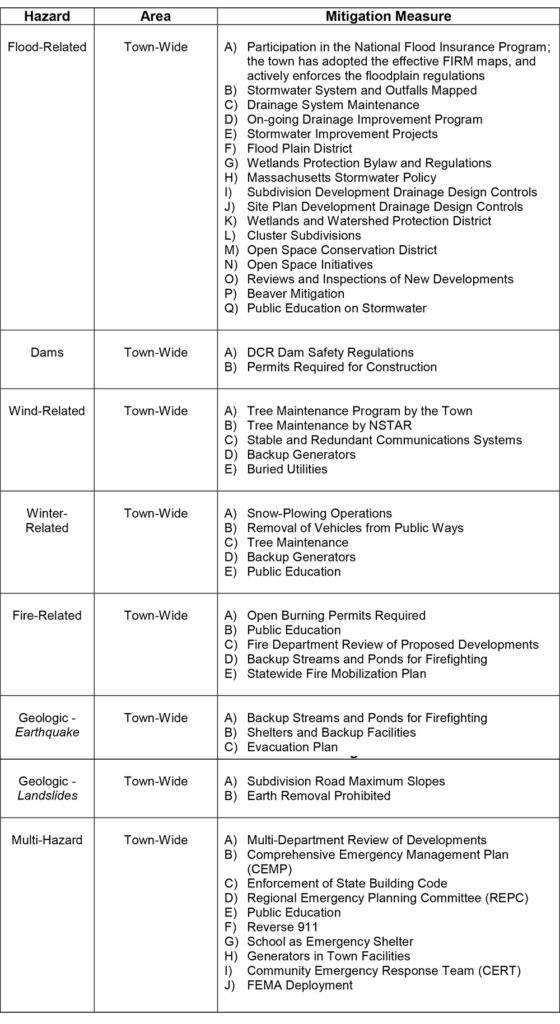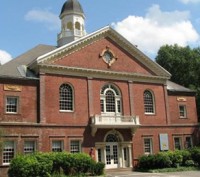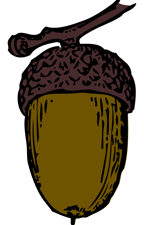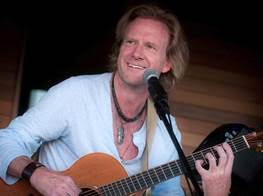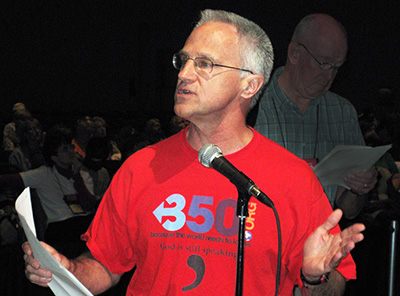Hazard Mitigation Plan approved
The Lincoln Hazard Mitigation Plan has been approved by the Massachusetts Emergency Management Agency and will go before the Board of Selectmen for adoption. The document was created as a useful guide for the town of Lincoln to meet the challenges of natural hazard events such as flooding, hurricanes and blizzards. Lincoln’s Plan will then be in effect for the next five years. Because the Town will now have an approved Hazard Mitigation Plan, the Town it is now eligible to apply for many state and federal grants.
DPW expands hours for brush disposal
To help with the cleanup from the March storms, the Highway Department yard at 30 Lewis St. will be open all four Saturdays in April to accept brush disposal from residents who have a Transfer Station sticker. The yard is normally available for brush disposal Monday through Friday and on the first Saturday of each month from 7:30 a.m. to 3 p.m.
To limit the use of emergency brush disposal privileges solely to Lincoln residents, staff will be checking vehicles to ensure they have valid Transfer Station stickers. If you are hiring an individual or company to clear your brush, you must contact the Highway Department in advance and provide your address, the name of the individual or company you have hired, and the date when this individual or company is expected to dispose at the yard. Any individual or company who does not meet the above conditions will be denied access to the DPW brush disposal area. Please call the Lincoln Highway Department at 781-259-8999 for more information.
ZBA seeks members
The Zoning Board of Appeals is seeking new members for open seats on the board. The ZBA is a land use board that interprets and applies the town’s zoning bylaw, acting on requests for variances, special permits, and appeals of decisions by the Building Inspector, considering the impact on the town and neighborhoods and the requirements of the bylaws. The ZBA has five regular members and three associate members and generally meets one evening a month. For more information, call the Selectmen’s Office at 781-259-2601 or click here for a volunteer application.
Cultural Council session postponed
Due to a family emergency, the Lincoln Cultural Council introduction meeting scheduled for Saturday, April 7 has been postponed. Anyone interested in learning more about the council and becoming a member should contact Melinda Bruno-Smith at melindabruno@hotmail.com.
Gospel group coming to First Parish
Joyful Voices of Inspiration, a community gospel choir, will perform at the First Parish in Lincoln on Sunday, April 22 at 3 p.m. in the Parish House Auditorium (14 Bedford Rd.) Joyful Voices of Inspiration is non-denominational and represents musicians from a wide range of religious backgrounds who find joy and power in the gospel’s music and message. They often donate their services at civic and fund-raising events in the Boston area. Suggested donation for the concert is $20 per person or $40 for a family. Children under 12 are free. Proceeds will benefit the First Parish in Lincoln.
Annual benefit gala at deCordova is May 12
Tickets are now available for the deCordova Sculpture Park and Museum’s annual Party for the Park gala benefit on Saturday, May 12 from 6:30–10 p.m. The event honors Phyllis and Jerry Rappaport, who have been loyal supporters of deCordova for the past three decades, most notably by establishing and funding the prestigious $25,000 Rappaport Prize. Established in 2000, the Rappaport Prize celebrates contemporary artists with strong connections to New England and a strong record of achievement.
The gala will be chaired by Gerard Frank, a founding partner of Bechtel Frank Erickson Architects and former board president of deCordova. Joyce Kulhawik, the Emmy Award-winning longtime arts and entertainment critic for CBS-Boston, will be a special guest.
Individual tickets are $500 and tables start at $5,000. Proceeds support deCordova’s exhibitions, lectures, and programs, and can be reserved by emailing rsvp@decordova.org or online at decordova.org/party.
FoMA sponsors tour of Modern houses
Friends of Modern Architecture is sponsoring a tour of three Modern houses in the newly created Brown’s Wood Historic District on Saturday, April 29 from 3–5 p.m. Built in 1956, 1957, and 1959, each house has been updated and adapted to the needs of its current owners while successfully maintaining the spirit and intent of the original house. Cost is $35 for FoMA members and $45 for non-members. RSVP to fomalincoln@gmail.com.
